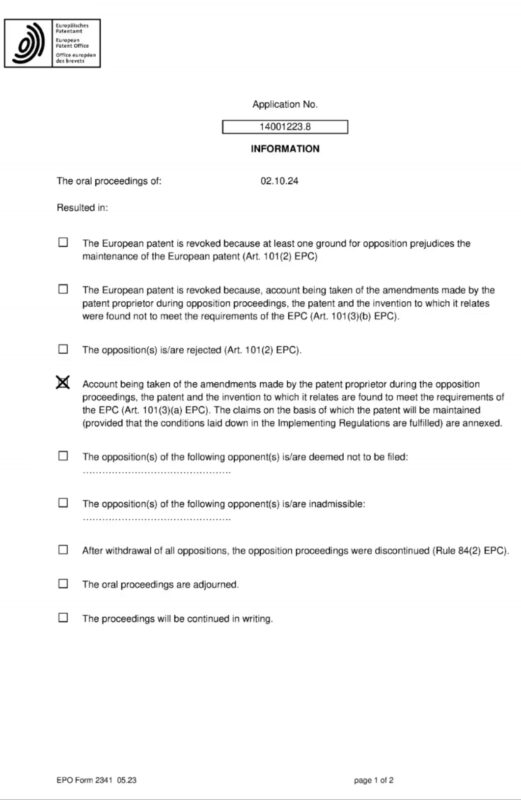PVTIME – A TOPCon patent infringement dispute between two leading solar module manufacturers has recently taken a significant step forward in Europe.
EP 2 787 541 B1, which is one of the patents asserted by JA Solar, a leading manufacturer of high performance photovoltaic products, against Astronergy, has recently been upheld as valid as a result of oral proceedings before the Opposition Division of the European Patent Office (EPO) conducted on 2 October 2024. The opposition had initially been filed by the French company Carbon, but Astronergy recently had joined the opposition and also took part in the oral hearing. The ruling of the Opposition Division confirming the validity of JA Solar’s patent is still subject to an appeal before the EPO’s Board of Appeals, but could have a significant impact on the parties’ subsequent litigation strategies at the Unified Patent Court (UPC) and, according to legal experts, may increase the pressure on Astronergy.

According to the Unified Patent Court (UPC), JA Solar has filed two patent infringement suits against Astronergy in July 2024, targeting Astronergy’s range of TOPCon solar modules and alleging infringement of JA Solar’s EP 2 787 541 B1 and EP 4 092 759 B1 patents.
The first patent, EP 2 787 541 B1, covers the characteristic layer structure of TOPCon solar cells, including the ultra-thin tunnelling layer of silicon oxide (SiO2) and a thin highly doped polysilicon layer on the back side of the silicon wafer, which allows electrons to pass through thanks to the quantum tunneling effect, while at the same time effectively reducing recombination effects, thereby improving the efficiency of the cells. EP ‘541 has a remaining lifetime until 2034 and is validated in Germany, the Netherlands, Italy, France and the UK.
The second patent, EP 4 092 759 B1, relates to the arrangement of the electrodes (consisting of finger lines and busbar lines) on the solar cell and of the lines connecting the individual solar cells of a solar panel. It is part of a larger family of patents relating to the structure and arrangement of the electrodes and connecting leads found on most TOPCon solar modules currently on the market. EP’759 will not expire until 2035 and has been validated as a Unitary Patent, meaning that it can be enforced in all Contracting Member States of the UPC.
On 2 October, JA Solar’s patent EP 2 787 541 B1 was upheld as valid during the oral opposition proceedings at the EPO, in which Astronergy also took part. The patent was maintained in its granted scope and the independent claims of the patent were not amended. This decision of the EPO Opposition Division is still subject to appeal.
However, it is a positive signal for JA Solar in defending its legitimate rights. And this decision provides an early insight into the case and could significantly influence subsequent litigation strategies.
A JA Solar spokesperson commented: “Intellectual property is of critical importance to JA Solar. It is necessary to protect our intellectual property, significant R&D and other investments. Patent protection measures will continue to be taken to defend our intellectual property rights while maintaining our reputation, heritage and culture of innovation”. The spokesperson added: “JA Solar’s leadership in solar technology is the result of nearly 20 years of R&D and huge amount of investment since 2005, resulting in significant advances in solar cell and module efficiency, performance and cost. As of 30 June 2024, JA Solar has a global patent portfolio of 1827 issued patents, of which 977 are invention patents, protecting the innovations that underpin its diversified solar cell and module technologies. In addition to a complete R&D system, we operate the unique Photovoltaic Intellectual Property Operation Centre in China, which is the first of its kind at the national level in the PV sector (excluding polysilicon) in China.”
The growing importance of intellectual property is a sign of a maturing market. Technological innovation depends on a patent system that rewards and protects the investment required to create such innovation. Fair competition in the market should be supported and the importance of intellectual property rights should be recognised by all industry participants. While patent disputes may put pressure on competitors, it is more important to promote the healthy growth of the PV industry by encouraging technological innovation and protecting intellectual property in line with industry development trends.










